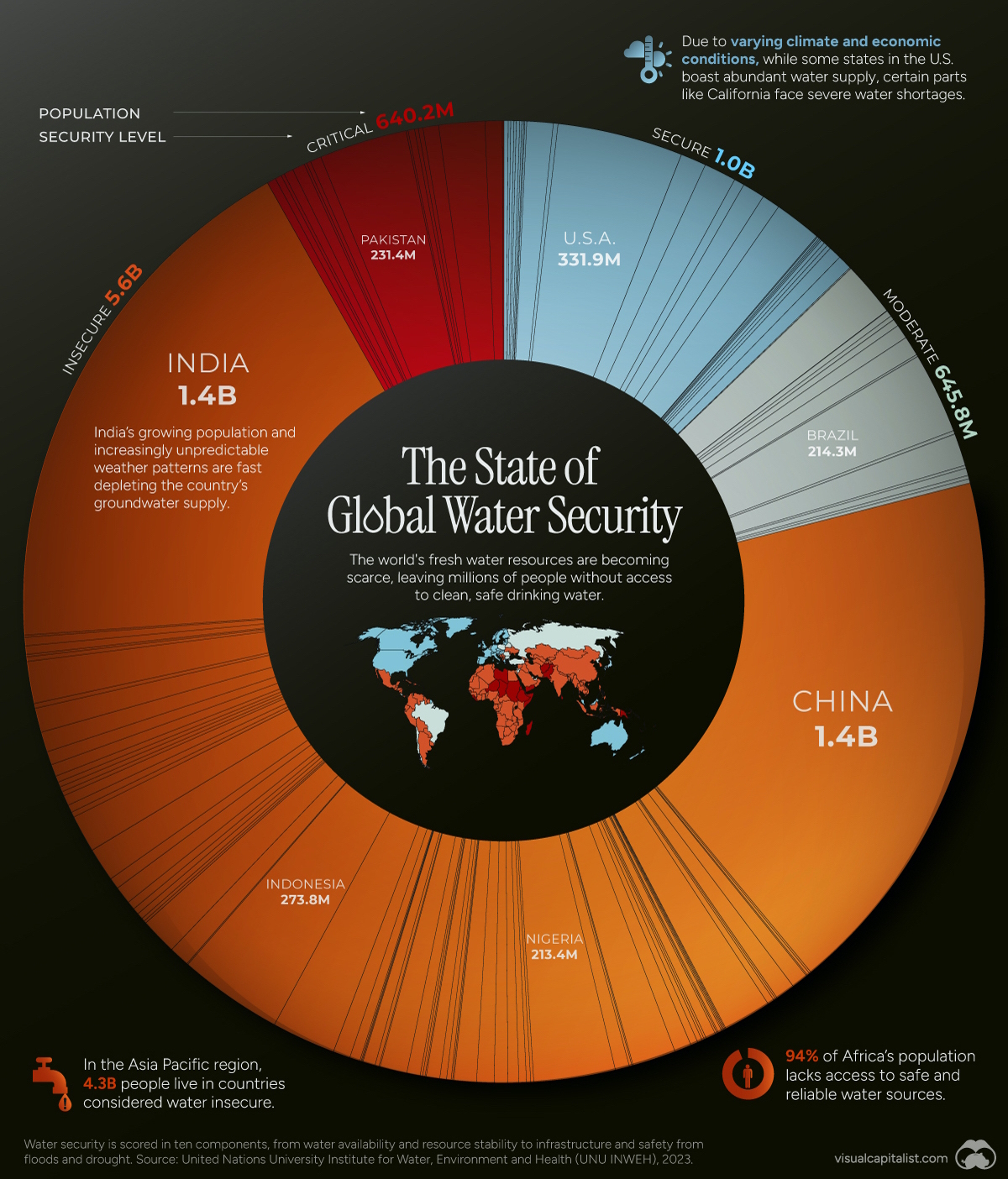The world’s two most populated India and China are among 113 countries considered to be water insecure. An additional 24 countries are considered critically water insecure, with the largest by population including Pakistan and Ethiopia.
Water security remains a concern around the world, but is especially dire in regions like the Middle East and Africa, where 13 of the 23 nations in the critically insecure category are located.
Addressing challenges like the diminishing supply of freshwater, the rising needs of expanding populations, inadequate infrastructure, and ineffective water governance can significantly influence a nation’s populace in their quest for water accessibility. The convergence of various elements swiftly transforms concerns regarding water security into tangible everyday experiences.
A recent report on Global Water Security published by the United Nations University meticulously evaluated the state of water security in various countries worldwide. This comprehensive assessment takes into account a multitude of factors that contribute to the overall security of water resources within a nation.
By analyzing these components, such as water availability, infrastructure readiness, population dynamics, and governance effectiveness, the report offers a comprehensive understanding of the challenges each country faces in securing a stable and sustainable water supply.
This study assesses water security in countries by examining 10 different underlying components, ranging from water quality and sanitation to availability, resource stability, and climate-related risks.
Each component is given a score out of 10, with a nation’s overall water security score calculated from the sum. Water security levels are assigned based on the overall scores:
75 and above is classified as “water secure”
65‒74 is classified as “moderately secure”
41‒64 indicates a country is “water insecure”
40 and below is considered “critically insecure”
Water Security Levels by Country
Country Water Security Score Assessed Level
Afghanistan 32 Critical
Albania 60 Insecure
Algeria 58 Insecure
Angola 53 Insecure
Antigua & Barbuda 56 Insecure
Argentina 56 Insecure
Armenia 60 Insecure
Australia 78 Secure
Austria 85 Secure
Azerbaijan 60 Insecure
Countries facing water security issues account for 72% of the world’s population, with an additional 8% of the global population facing critical water insecurity.
That includes 4.3 billion people in the Asia-Pacific region alone, and an additional 1.3 billion people across Africa. Many of these countries are grappling with issues including fast-growing populations and drought conditions faster than they can develop the necessary infrastructure to deal with them.
Only 12% of the world’s population lives in water-secure countries, including almost all Western countries, with Norway at the very top of the rankings at an overall score of 90. An additional 8% of the world lives in moderately secure countries such as Brazil and Russia.
However, water availability in these more secure countries is not perfect either. For example, U.S. states reliant on the Colorado River for irrigation and drinking water are facing continued drought conditions and limiting consumption, with further crisis on the horizon.
Towards a Water Secure Future
As nations around the world face increasing water-related challenges, governments and international agencies have been collaborating to foster sustainable water management practices. In fact, clean water and sanitation for all is one of the UN’s Sustainable Development Goals (SDGs).
Many regions have already begun to implement these practices. For example, cities in California have begun recycling wastewater and capturing stormwater to deal with water scarcity. Farming-dependent regions are also looking to smart agriculture to reduce the drain on the limited freshwater resources.
Such initiatives to improve water irrigation systems, enhance water infrastructure, and conserve the depleting freshwater reserves may help elevate countries out of water insecurity and help preserve this precious resource for generations to come.









 United Arab Emirates Dirham Exchange Rate
United Arab Emirates Dirham Exchange Rate